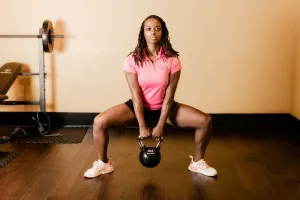Engaging in regular physical activity is crucial for maintaining the overall health and well-being of children, especially those with disabilities. Physical activity not only aids in enhancing cardiovascular health and muscle strength but also plays a significant role in boosting self-esteem and fostering social interactions. For children with disabilities, participating in physical activities can lead to improvements in motor skills, coordination, balance, and ultimately enhance their overall quality of life.
Understanding the Unique Needs of Children with Disabilities
Before diving into specific approaches, it’s essential to recognize that children with disabilities often have unique needs and face various challenges that require tailored strategies. Disabilities can vary widely, from physical impairments like cerebral palsy to developmental disorders such as autism. Understanding these differences is key to promoting effective physical activity.
Creating Inclusive and Accessible Environments
Establishing inclusive and accessible environments that cater to the diverse needs of children with disabilities is paramount. This involves providing adaptive equipment, modifying physical activity programs, and ensuring that facilities are accessible. By making the environment inclusive and accommodating, children with disabilities are more likely to feel empowered and motivated to engage in physical activities, leading to a more active and fulfilling lifestyle.
Adaptive Equipment and Modifications
To accommodate different abilities, adaptive equipment such as specialized bikes, wheelchairs, or sports gear can make a significant difference. For instance, children with limited mobility may benefit from using a handcycle instead of a traditional bicycle. Similarly, modifying sports rules, like reducing the size of a playing area or allowing additional time for tasks, can make activities more accessible.
Case Study: Inclusive Playground Design
Consider a playground designed with children of all abilities in mind. Features such as ramps, sensory play areas, and tactile paths ensure that every child can participate. These playgrounds foster an inclusive atmosphere where children with disabilities can play alongside their peers, promoting social interaction and reducing feelings of isolation.
Implementing Tailored Physical Activity Programs
Developing customized physical activity programs that are tailored to the specific needs of children with disabilities can significantly enhance their participation and enjoyment. These programs should be designed with consideration for each child’s unique abilities, interests, preferences, as well as any challenges they may face.
Collaboration with Professionals
Collaborating with physical therapists, occupational therapists, and other healthcare professionals can aid in creating effective and personalized physical activity programs that cater to the individual needs of children with disabilities. Professionals can assess a child’s abilities and recommend suitable activities, ensuring both safety and engagement.
Example: Adaptive Swimming Programs
Adaptive swimming programs offer an excellent example of tailored activities. These programs often modify traditional swimming techniques and use flotation devices to support children with varying abilities. The buoyancy of water also provides a safe environment to improve strength and coordination without putting undue stress on joints.
Providing Ongoing Support and Encouragement
Consistent support and encouragement are vital in encouraging children with disabilities to engage in regular physical activity. Parents, caregivers, teachers, and healthcare providers all play pivotal roles in providing guidance, motivation, and support to help children with disabilities maintain an active lifestyle.
Building a Supportive Network
Creating a network of support involves regular communication among caregivers, educators, and therapists. By sharing insights and strategies, this team can ensure that physical activity remains a positive and consistent part of a child’s routine.
Celebrating Small Wins
Recognizing and celebrating their accomplishments, regardless of size, can significantly boost their confidence and instill a positive attitude towards physical activity, promoting long-term engagement and overall well-being. Simple gestures such as certificates of achievement or verbal praise can reinforce their efforts and encourage persistence.
Emphasizing the Benefits of Physical Activity
Educating children with disabilities about the multitude of benefits that physical activity offers can serve as a powerful motivator for them to partake in regular exercise. By underscoring the positive impacts on physical health, mental well-being, social skills, and overall quality of life, children with disabilities can be inspired to adopt an active lifestyle.
Health Benefits: Beyond Physical Fitness
While physical health is a primary focus, the benefits of regular activity extend to reducing anxiety, improving mood, and enhancing focus. Particularly for children with disabilities, exercise can serve as a constructive outlet for energy and emotions, contributing to better mental health.
Social and Emotional Growth
Participation in group activities or sports fosters teamwork and communication skills. For children with disabilities, these interactions are invaluable, as they can help break down social barriers and build lasting friendships. Encouraging participation in community sports teams or clubs can provide these opportunities.
Overcoming Barriers to Participation
Despite the benefits, several barriers can hinder the participation of children with disabilities in physical activities. These can include societal attitudes, lack of resources, or insufficient training for staff working with these children.
Changing Perceptions
One of the first steps in overcoming these barriers is addressing societal attitudes. Hosting workshops and awareness programs can educate communities about the abilities and potential of children with disabilities, encouraging a more inclusive mindset.
Resource Allocation
Ensuring that schools and community centers have the necessary resources is crucial. This can involve fundraising efforts to purchase adaptive equipment or training programs for instructors to better understand the needs of children with disabilities.
Engaging Families in the Process
Families play a crucial role in promoting and sustaining physical activity for children with disabilities. Encouraging active family time, such as weekend hikes or games in the park, can instill a love for movement and create meaningful family bonds.
Practical Tips for Families
- Set Realistic Goals: Start with small, achievable goals and gradually increase the complexity of activities.
- Incorporate Interests: Find activities that align with the child’s interests to increase motivation.
- Be Patient: Progress might be slow, but consistency and patience are key.
Leveraging Technology for Engagement
In today’s digital age, technology can be a powerful tool to encourage physical activity among children with disabilities. From apps that track activity levels to virtual reality games that promote movement, technology can make exercise more appealing and accessible.
Example: Virtual Reality Exercise
Virtual reality (VR) can provide immersive experiences that encourage movement in a fun and engaging way. For example, VR games that simulate sports or dance can offer an enjoyable way for children with limited mobility to engage in physical activity.
Building Community Support Systems
Creating a supportive community can have a profound impact on encouraging children with disabilities to remain active. Community programs, support groups, and inclusive events can provide children and their families with the resources and encouragement they need.
Organizing Community Events
Community events such as fun runs or adaptive sports days can raise awareness and promote inclusion. These events provide opportunities for children with disabilities to participate in a supportive environment while educating the community on the importance of inclusivity.
Continuous Evaluation and Adaptation
Finally, it’s important to continuously evaluate and adapt physical activity programs to ensure they meet the evolving needs of children with disabilities. Regular feedback from children, parents, and professionals can help refine activities and maintain their effectiveness and enjoyment.
Staying Flexible
Being open to change and willing to try new approaches can lead to more effective strategies. What works for one child may need adjustment for another, and staying flexible ensures that all children can benefit from physical activity.
By embracing these approaches, we can create an environment where all children, regardless of ability, can enjoy the lifelong benefits of physical activity. Through understanding, inclusion, and support, we can empower children with disabilities to lead active, healthy, and fulfilling lives.



